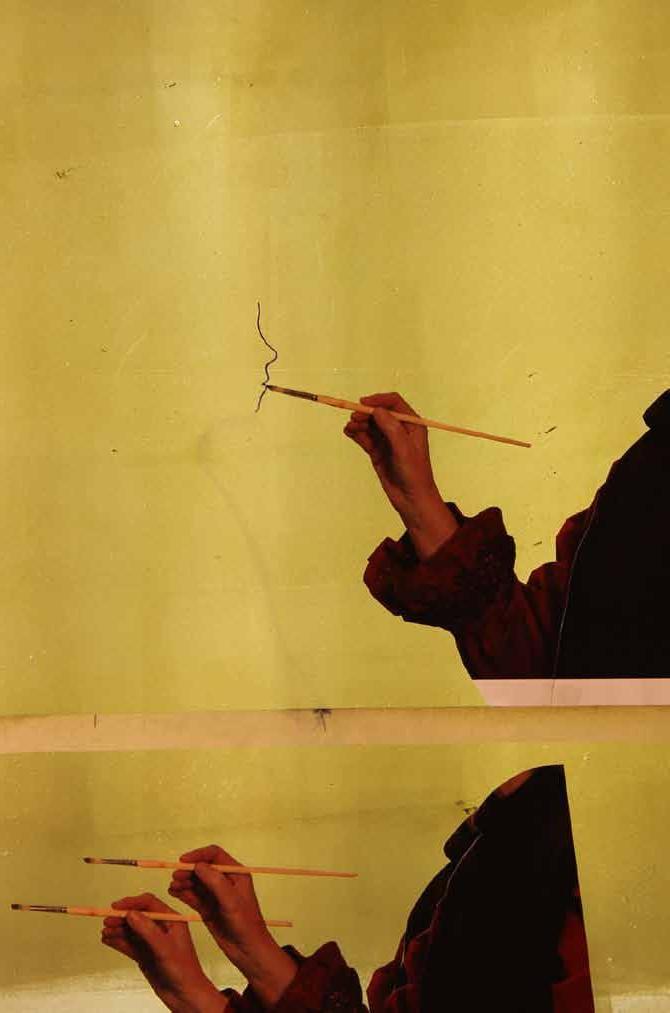
1 minute read
Life, Labour, Language
On the back wall of the set is a mirror. It is in this mirror that the king and queen appear and are displaced throughout the narrative in To Be King. The mirror becomes the place where the king both materialises and where his body is placed in jeapardy.
The Colony
Advertisement
Facing the projection stands a sculpture, The Black Infanta. The Black Infanta is the embodiment of everything the king is not. Young, female, dark, peripheral, powerless. In dialogue with the king in the mirror, she both stands in the space reserved for him and is outside of him. A child from the border she offers an alternative, a possibility of another way in which to view the order of things.
Standing in the dark, in front of the flickering screen, watching alongside the unseeing eyes of The Black Infanta, the viewer, herself being watched by the museum gaurd, becomes a participant in an exchange that reveals the complicity of power through the act of looking.
This latter type would be the heterotopia, not of illusion, but of compensation, and I wonder if certain colonies have not functioned somewhat in this manner. In certain cases, they have played, on the level of the general organization of terrestrial space, the role of heteroptopias. I am thinking, for example, of the first wave of colonization in the seventeenth century
NOTES
[1] M. Foucault, The Order of Things: An Archaeology of the Human Sciences (London, 1970, p. xvii). [2] Ibid (p. xviii). [3] D. Hook. D . Foucault, Psychology and the Analytics of Power,(Great Britian, Palgrave MacMillan. 2007 p. 184) [4] Ibid (p. 186) [5] Ibid (p. 185) [6] M. Foucault, Of Other Spaces, Heterotopias, (Conference au d’etudes architecturales 1967).








